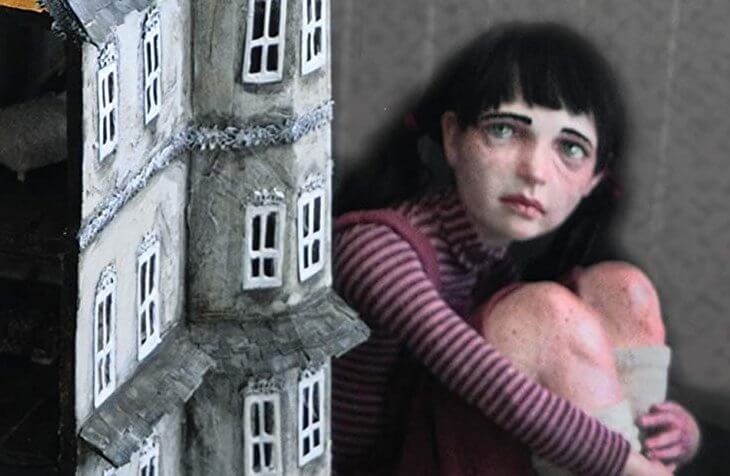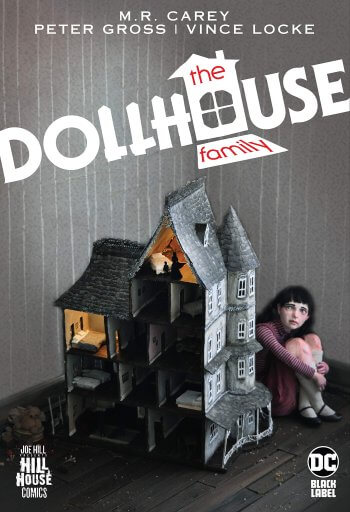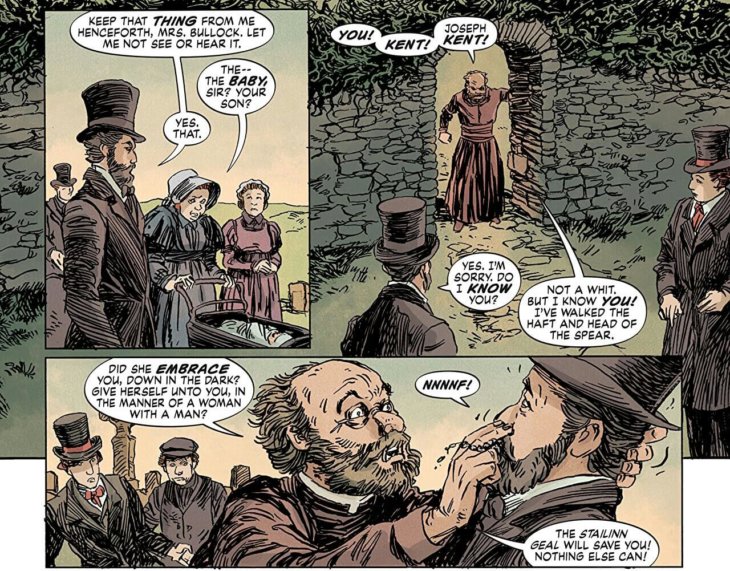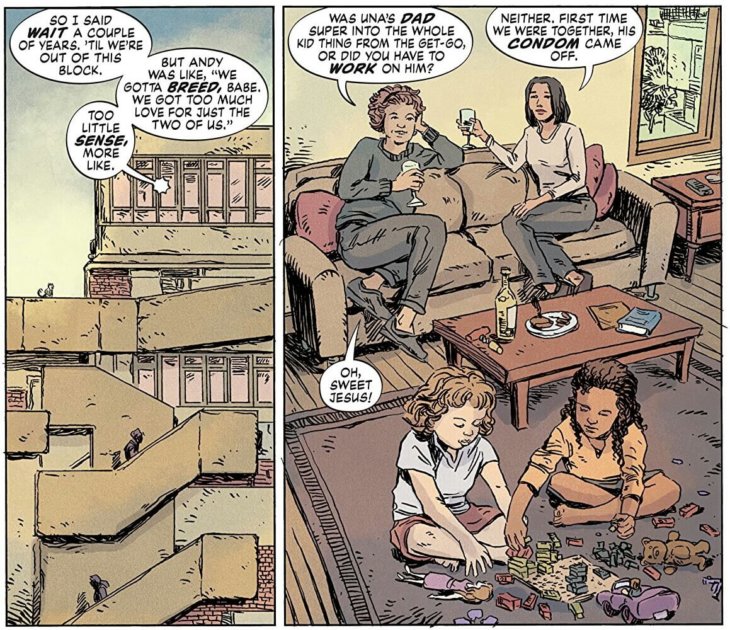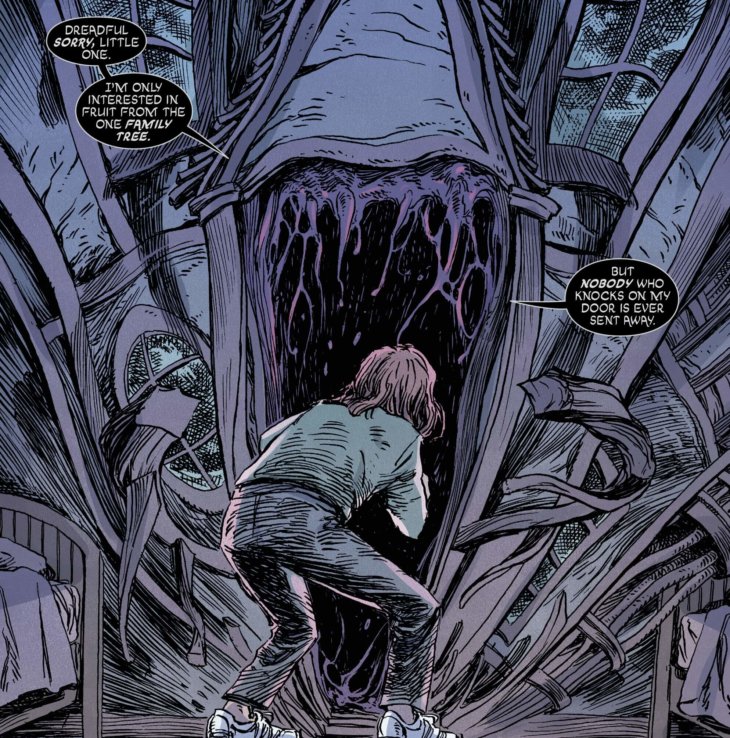The story of The Dollhouse Family begins when a little girl named Alice inherits a gift from an obscure relative: an antique, lavishly-detailed dollhouse, complete with five little dolls in period costume. These toys offer Alice some escapism from her unhappy home environment, dominated as it is by her abusive father. And if she says the right magic words, Alice can even enter the dollhouse, shrinking down to the same size as the tiny family inside.
The Dollhouse Family
M. R. Carey (Writer), Jessica Dalva (Collection Cover Artist), Peter Gross (Layouts), Todd Klein (Letterer), Vince Locke (Finishes), Cris Peter (Colourist)
DC Comics
October 13, 2020
Alice encounters more than the five dolls inside. One of the rooms, known as the black room, is home to a disembodied voice. It tells her that her father will kill her mother, unless he is stopped. The voice of the black room offers to intervene, but Alice decides to handle matters her own way. Taking a hammer, she puts an end to her father’s abusiveness forever.
All of this occurs in the first chapter of The Dollhouse Family, a newly-collected miniseries by writer M. R. Carey and the artistic team of Peter Gross, Vince Locke and Cris Peter. As, indeed, do a prologue in which a Lovecraftian entity falls to Earth and a flashback to Alice’s nineteenth-century ancestor encountering a demonic woman in a cave. This is a comic with no space for narrative decompression: it squeezes as much plot as possible into its page count, with full faith in the reader’s ability to follow.
The plot continues to unfold at a dizzying pace over the following chapters. Alice kills her father but her mother takes the rap, later being murdered in prison. Alice herself is sent to a foster home where she is bullied mercilessly; to escape, she returns to the dollhouse, spending more time with both the miniature family and the temptations of the black room. As the years pass she leaves the foster home, grows up, has a one-night stand that leads to an unexpected pregnancy, raises her daughter, and is reunited with the enchanted (or cursed?) dollhouse of her childhood – all within the first half of the story.
The Dollhouse Family is structured as a puzzle, setting up two alternating narratives – one in the twentieth century, the other in the nineteenth – and gradually piecing together the wider story that connects the two. This is only one of the comic’s puzzles; the other concerns the fundamental workings of the supernatural forces that are in play. These turn out to follow a rigid set of rules – for example, the black room of the dollhouse is capable of altering the real world, but will make only one change in return for each person who agrees to enter the house forever. The intricacy lies in the ways these rules have affected the story’s characters over the eras.
Our partner in piecing together this puzzle is, of course, Alice herself. Although her development as a character occurs in fast forward, it is given enough detail to ensure that she serves as an engaging protagonist. Her various struggles in life – from the abuse committed by her father, through the bullying she suffers as an orphan, and eventually to the violent bigotry that confronts she and her mixed-race daughter – all bring a believable touch of humanity to a story otherwise concerned with supernatural strangeness.
That strangeness, incidentally, takes on a range of different forms. The central image of a girl who shrinks down to enter an eerie antique dollhouse would have been a high enough concept for many a horror comic, but the world of The Dollhouse Family has other curiosities on show. A demon that appears first as a traditional goat-legged humanoid, and then as an eldritch mass of flesh, teeth and eyes. A giant that slumbers in a dark cave. A placenta with supernatural properties. An amputated leg that suddenly grows back. An odd-looking cat with secrets to share. A childhood bully who returns as a malevolent ghost.
One thing that unites these elements of the story is that they all carry visual strength. Through the artwork by Gross, Locke and Peter, the comic successfully weaves its various fantasy elements together to create a cohesive world. The illustrations feel somehow old-fashioned, yet are naturalistic enough to transcend any particular era. The characters and settings are solid and believable, while the incursions of the supernatural – depicted as fleshy, organic and tactile – come across as consistent extensions of the mundane surroundings. Although the world of the comic is a confined, artificial space, it nonetheless feels alive – as though we might shrink down and step inside, just as Alice enters the dollhouse.
And for all its horrors, this world remains inviting. With characters to meet, puzzles to solve and a surprise within every cranny, a journey through The Dollhouse Family has its delights as well as its anxieties. Hill House Comics has delivered another worthy addition to the library of anyone with an appreciation for horror comics.

